Time travelling with
Dr Aidan Starr
Why a mysterious ocean pattern could rapidly change our climate.
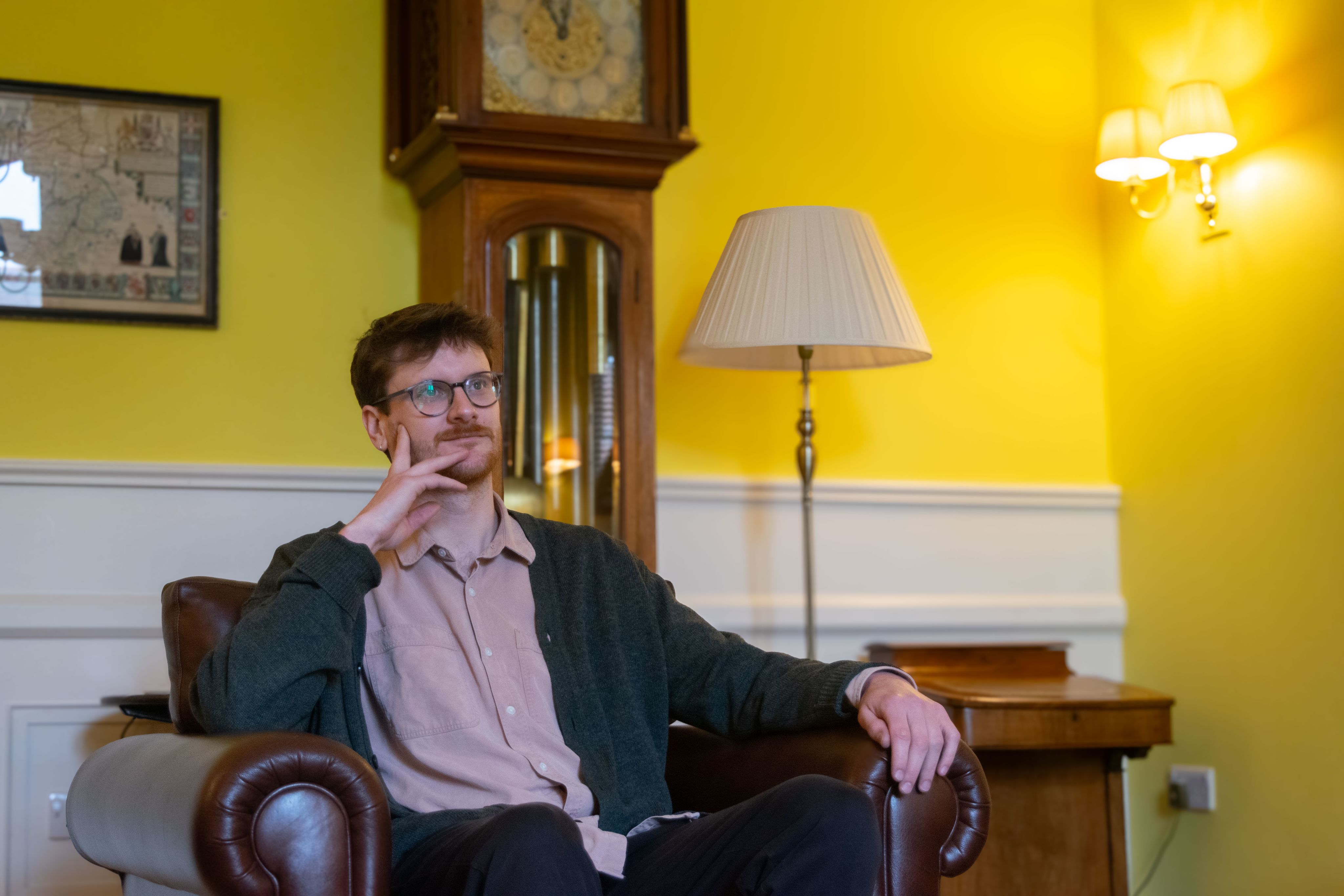
In journeying back 2 million years, Dr Aidan Starr hopes to fill in the missing chapters of our oceans.
If you’re looking for time travellers, start in Australia and head south.
Near the shore, the sea is calm and crystal clear. Whales lounge, sea-birds frolic.
As you approach the Southern Ocean and Antarctica beyond, the winds increase in ferocity. You can tell by the names sailors give these latitudes: the roaring forties, the furious fifties. To see a ship this far south is rare. But time travellers are picky - only certain sites will suffice.
A massive wave crests and reveals one intrepid vessel. It is crewed by scientists of all kinds, including a few paleoceanographers. Long shifts working with heavy machinery leave each sailor covered in mud and oil. Battered by icy winds and tossed by brutal waves, they are interested in what lies beneath.
Here is Dr Aidan Starr, prepping a gravity core while trying to hold down his lunch.
The gravity core is a huge metal pipe, hollowed-out and top heavy. Starr levers it off the side of the ship with a mechanical arm, and hurls it into the ocean.
The pipe pierces the seafloor like a harpoon. Heaving the core back to the surface, the scientists cut the pipe in half. If they’re lucky, inside will be a stratified sequence of sediment, allowing them to gaze into the distant past.
Every layer deeper below the seafloor is a step further back in time.
“I generally stay in the last 2 million years," Starr says. “But with a drill, you can get samples that go back at least 60 million.”
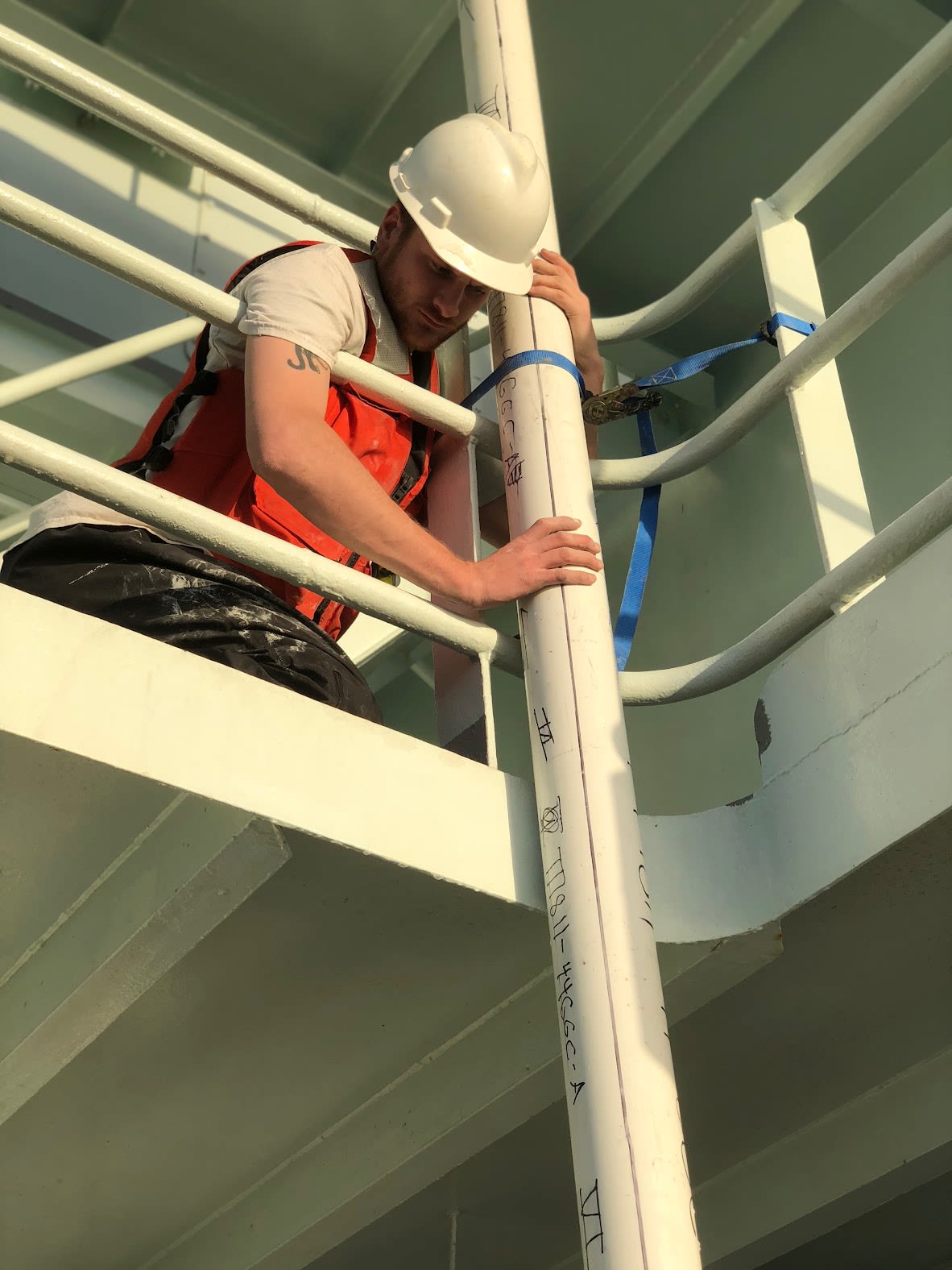
Starr with a core on board the Thomas G. Thompson
Starr with a core on board the Thomas G. Thompson
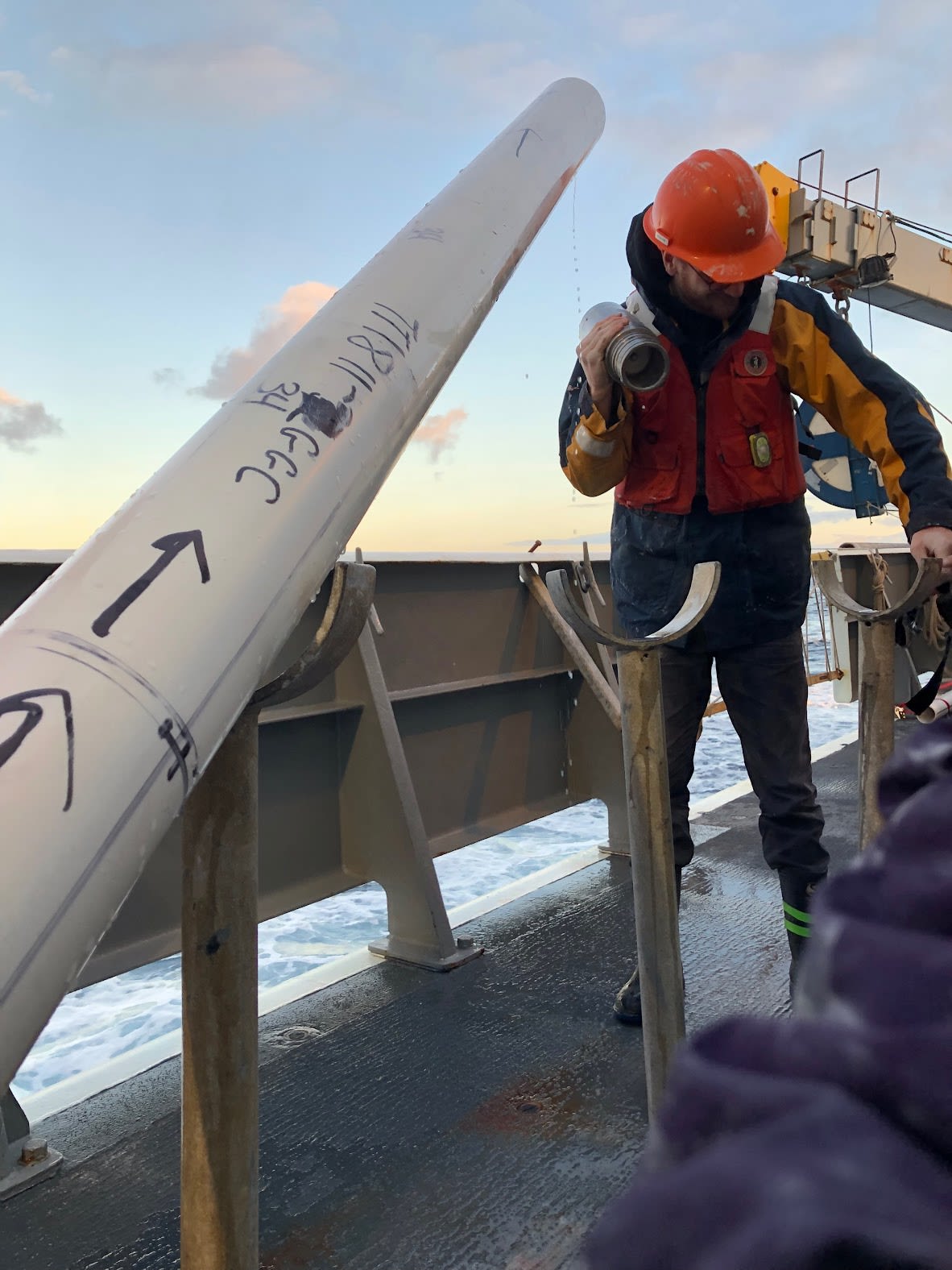
Starr with a core immediately after recovery in the South Indian Ocean
Starr with a core immediately after recovery in the South Indian Ocean
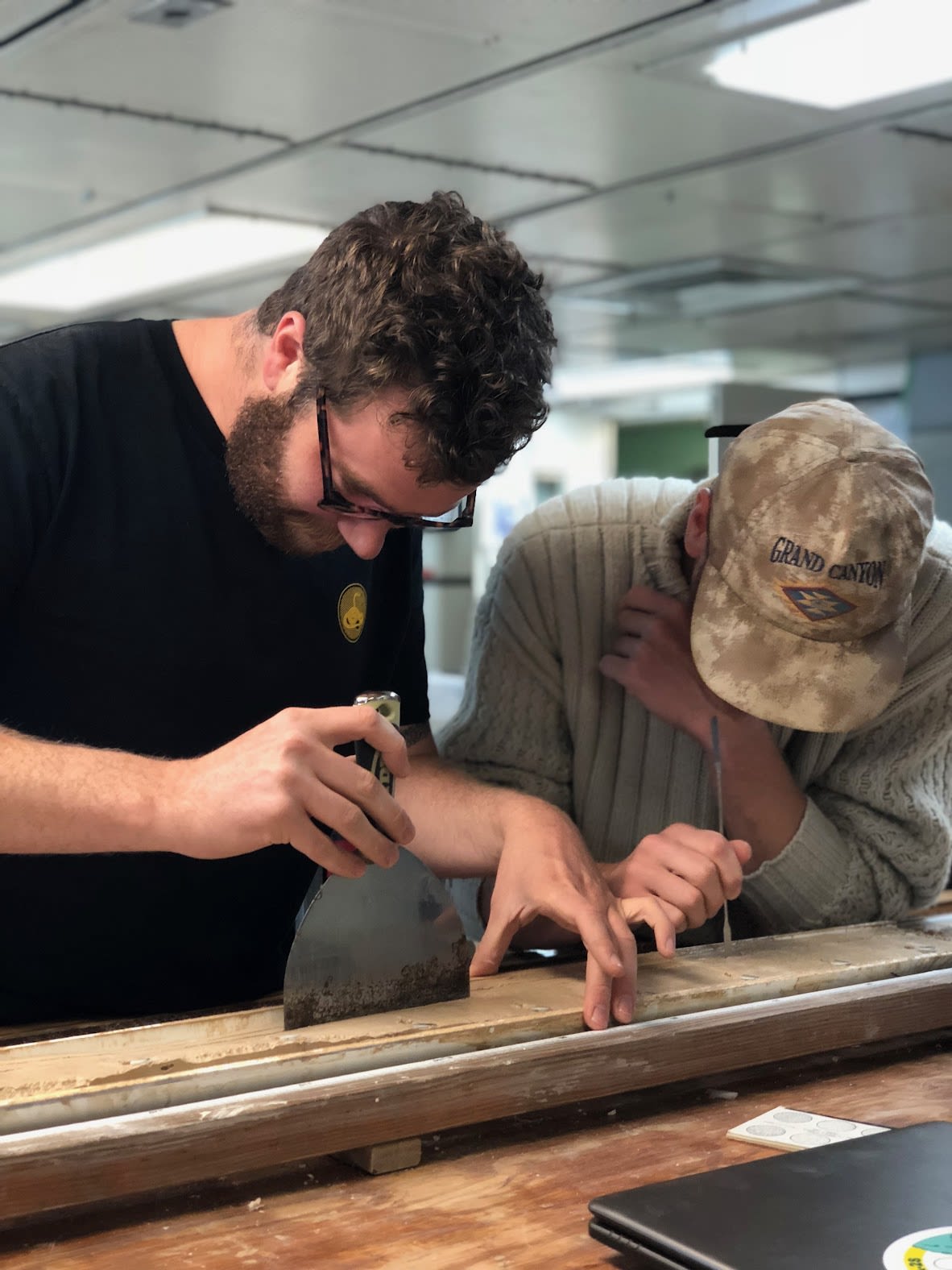
Dr Harris Anderson (left; University of Tasmania) and Dr Aidan Starr (right) inspecting the core
Dr Harris Anderson (left; University of Tasmania) and Dr Aidan Starr (right) inspecting the core
The present day
Before arriving at Cambridge, this was Starr’s job - collecting deep sea sediment cores.
In the present day, Starr is a Postdoc Research Associate for the Department of Geography, and a Trevelyan Research Associate at Selwyn College. He works on processing the cores people bring back from the ocean bed.
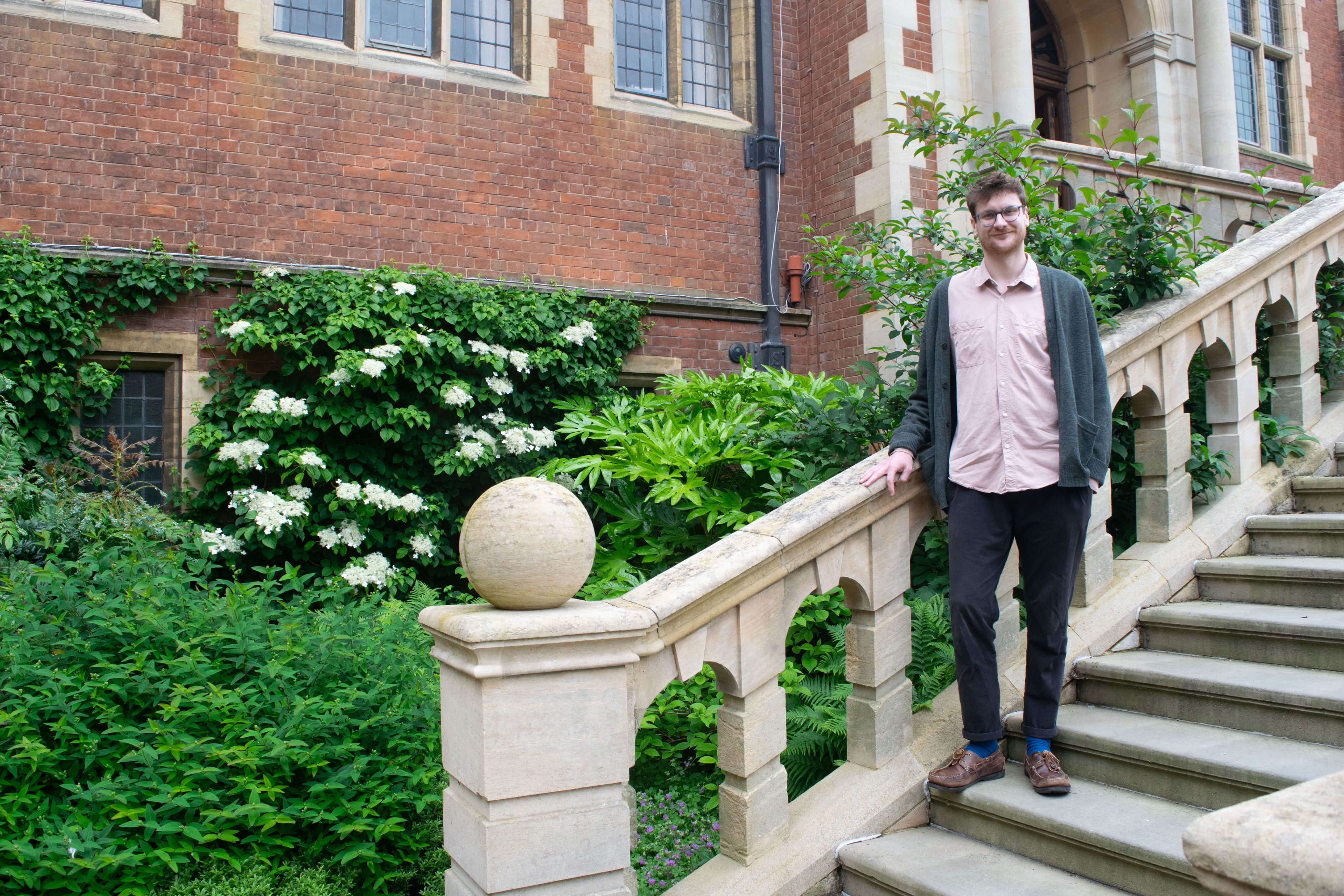
Starr on the steps at Selwyn
Starr on the steps at Selwyn
Washing mud through a sieve like a gold rush prospector, he picks out microfossils from the mess. Some species are no larger than a grain of sand. The mud tells stories far-flung in space and time. He has sifted shells found outside Maine, from a beach which disappeared 20,000 years ago.
After practising for hundreds of hours, Starr has it down to a fine art.
“I see these fossils in my sleep. It’s quite meditative. Some species you always want - they’re the ‘faithful recorders’ of the carbon cycle. Whenever I see those guys in the corner of my eye, I’ll grab them.
“It’s remarkable how much information can be found in these deep sea cores. We can measure the chemistry and atomic character of plankton shells. We can tell how fast the ocean was flowing by looking at how coarse the silt grains are.”
Starr is looking for something very specific in these cores. He wants to scrutinise intervals of rapid climate change, when the world flipped between a glacial and interglacial period. These abrupt switches relate to changes in a mysterious pattern, which scientists have recently begun to unpick. The pattern is an ocean current with a two-sided nature, known as the AMOC.
Run AMOC
Meet the AMOC - the Atlantic Meridional Overturning Circulation. Like a giant conveyor belt, it carries water, salt and sediment across the oceans. Alongside these it brings heat from the south, across the equator and into the north, depositing that heat into the atmosphere.
“That’s why, in Cambridge, it’s relatively warm compared to other places at our latitude,” says Starr. “It's much colder in landlocked places on our latitude, like Siberia.”
Over the last 100 years, researchers have built a complex picture of how the AMOC functions. In 1961, oceanographer Henry Stommel realised that Earth’s oceans collectively circulate according to certain rules, governed by equilibrium states. These states are holding patterns that the oceans stabilise in. They only jump between states when certain conditions arise. In the 1980s, Wally Broeker discovered rapid warming intervals in the geological record. During these times, Greenland would warm 10 or 15 degrees in a couple of decades.
These rapid fluctuations became known as Dansgaard-Oeschger events - the flick of the switch from one equilibrium to another. Broeker recognised this switch-flick mechanism in the AMOC, in a paper called ‘Unpleasant surprises in the greenhouse.’ He would later coin the phrase ‘global warming’.
It turns out that the modern AMOC has two states - ‘strong’, which is stable and warmer, and ‘weak’, which is low energy and colder. Broeker realised that ocean fluctuations could totally change the climate in the North Atlantic: not gradually, but suddenly.
Starr has seen these sudden changes written in ice cores.
“In the ice, you can see glacial periods lasting around a hundred thousand years. But then if you zoom in, you see these jumps in the record. That’s a flicking of the AMOC switch.”
Currently, we’re in a stable, warm AMOC state. We have been for all our lifetimes, and for many generations before. Our interglacial is called the Holocene, and has kept us cosy for at least 11,000 years. But there are some signs that we might be heading towards a tipping point.
“The thing about a tipping point is, you might not know it’s crossed until it’s too late. Once you’re in the new equilibrium state, it takes a lot to throw the switch back.”

Animation demonstrating the two states of the AMOC ('AMOC strength'), in response to freshwater being added to the North Atlantic ('hosing').
Animation demonstrating the two states of the AMOC ('AMOC strength'), in response to freshwater being added to the North Atlantic ('hosing').
Distil the story
So what might a weak AMOC state look like? The models for a pre-industrial world suggest that Northern Europe would experience a strong cooling. That includes the UK and Greenland, which would lose the supply of heat from the Gulf Stream. The low state would also dramatically shift rainfall patterns across the equator, in places like the Amazon and the Sahara.
The trouble is - we’re not in a pre-industrial world.
Humans have transformed the Earth’s natural systems in profound ways. We associate anthropogenic climate change with rising temperatures and more erratic weather. But when it comes to millennia-old oceanic currents, the picture is more complicated. How do we grapple with simultaneous warming and cooling events, affecting different regions of our planet in different ways? Figuring out the real-world implications for our climate is slightly mind-boggling.
“When you consider anthropogenic warming as well as an AMOC tipping point, it gets complicated,’ Starr says. ‘That’s what my research group is trying to figure out. We’re looking at deep sea sediment and ice cores to try and find the fingerprints of an AMOC shift. That way, we can better anticipate what a future shift might look like.
“The ocean is a messy place. Every component of it has some natural variability. Even if human-driven climate change was not a factor, these systems would naturally oscillate between states.”
We have come a long way in our understanding of the oceans. Nowadays, we have moored arrays, autonomous submarine gliders and world-class coring abilities from ships like the RRS Sir David Attenborough. But we’ve only been measuring the AMOC directly since 2004. That’s not a long time to determine what state we’re currently in. That’s why Starr hopes to extend our records of AMOC deeper into the past.
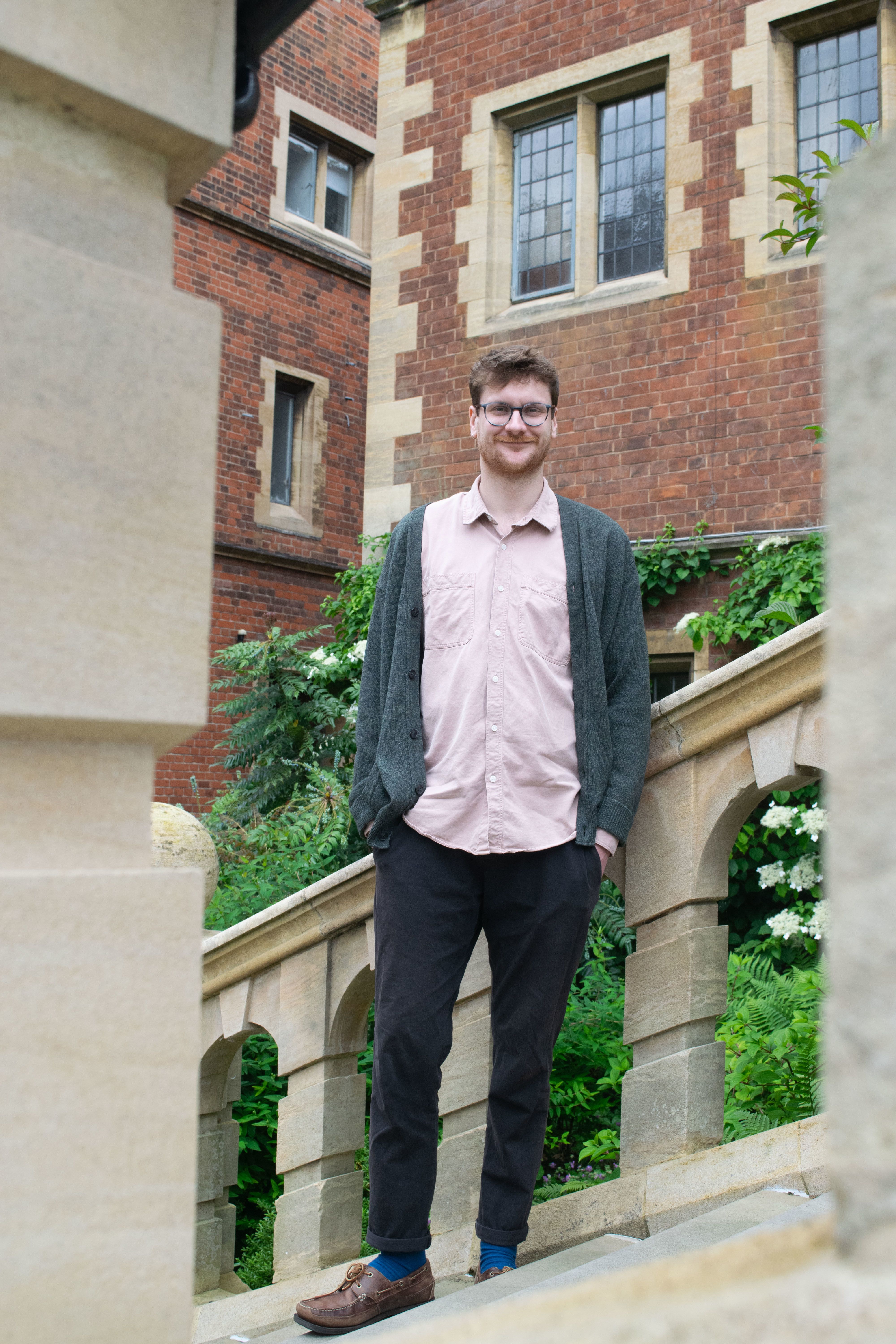
Aidan on the steps at Selwyn College.
Aidan on the steps at Selwyn College.
“It’s so cool to be doing this in Cambridge, where this discipline was born. Earth Sciences’ Sir Nick Shackleton was the father of paleoceanography. He taught us everything we know about ice age cycles. We’re following in his footsteps.
“The rich data sets from sediment and ice cores can help us to do this. It’s a lot of work to highlight the effects of the AMOC amid uncertainty and noise. Our group assimilates all that data to try and extract a reliable signal.”
Across Earth Sciences, Geography and research groups around Cambridge, scientists are distilling the story of our oceans. It is a messy, complicated and essential job. Time travelling is one ingenious method to read our oceans’ hidden chapters, and predict where the story might lead.
Published on 4 July 2024
The text in this work is licensed under a Creative Commons Attribution-NonCommercial-ShareAlike 4.0 International License

